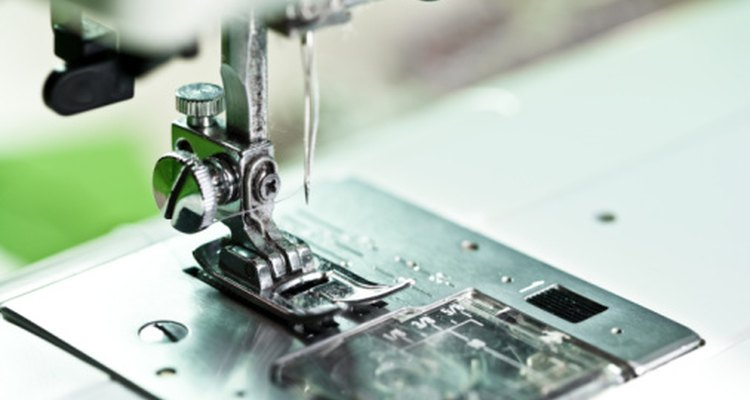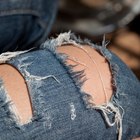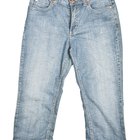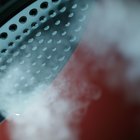
Sewing machines that are not set up properly produce strange results. Two pieces of material with two lines of thread coming together using one needle requires precision. A loose stitch on the underside of the material is a common problem caused by a lack of precision in the setup of the machine. Different parts move and rotate simultaneously. If they are not timed correctly, one side sews faster than the other.
Maintenance Issues
As you sew, lint and particles accumulate over the feed dog that helps push the fabric through the machine. Buildup of lint can lessen the grip it has on the material causing it to feed under the needle unevenly, creating slack on the thread. Clean the throat plate and feed dog regularly as well as the pressure foot so that the material can move through uniformly with an even stitch.
Needles and Threading
Using the wrong size or type of needle for the material you’re working with can create the wrong sized and placed hole in the material. The effect is that the thread will not be held tightly in place. The sewing machine needs to be threaded correctly and set for the right type of stitching needed for the material. Use the same thread on the bobbin or you will have uneven stitching.
Tension
Tension needs to be properly set on the sewing machine. Tension will change for different types of materials and should be adjusted accordingly. The weight and softness of the fabric, as well as the type and length of stitch can make the stitch to tight, too loose or unbalanced. Test your stitch on a spare piece of material. If the understitch is loose, tighten the bobbin tension one quarter turn and try again.
Sewing Speed
Once you have the machine set properly, start sewing and let the machine do its job. Manually pulling the material will alter the stitching speed and cause dropped or loose stitches. The pressure foot and feed dog are designed to move the material at the proper speed and tension. Slowing the movement down or speeding it up will change the tension on the thread causing it to snap or become loose.
Related Articles

How to Troubleshoot an Omega Sewing ...

How to Attach Rivets in Fabric

How to Remove Wrinkles From Polyester ...

How to Use Fabric Tape to Tailor Clothes

How to Put in a Separating Zipper

How to Fix Cuts in Polyester Clothes

How to Attach Adjustable Buckles

How to Repair Denim

How to Repair a Ripped Back Pocket on ...

How to Fix a Broken Pencil Skirt Zipper

How to Thread a Ladder Lock Buckle

How to Hem Pants Without Sewing

How to Fix Jogging Pants With Saggy ...

How to Decrease the Padding in a Bra

How to Straighten Your Hair Without ...

How to Make a Bullet Bra

How to Unwrinkle Velvet

How to Get Cigarette Burns Out of Fleece

How to Fix a Wire That Has Come Out of ...

How to Repair a Bra Strap
References
Writer Bio
Based in Toronto, Canada, Andrew Copley has been contributing online articles on alternative treatments for immune disorders since 2008. After six years continuing research, Copley has acquired extensive knowledge on nutrition and its effects on the immune and nervous system. He holds a level one standing in university physics and science from Fanshaw College.
Photo Credits
Jupiterimages/Photos.com/Getty Images